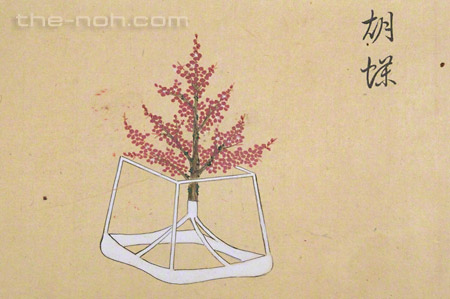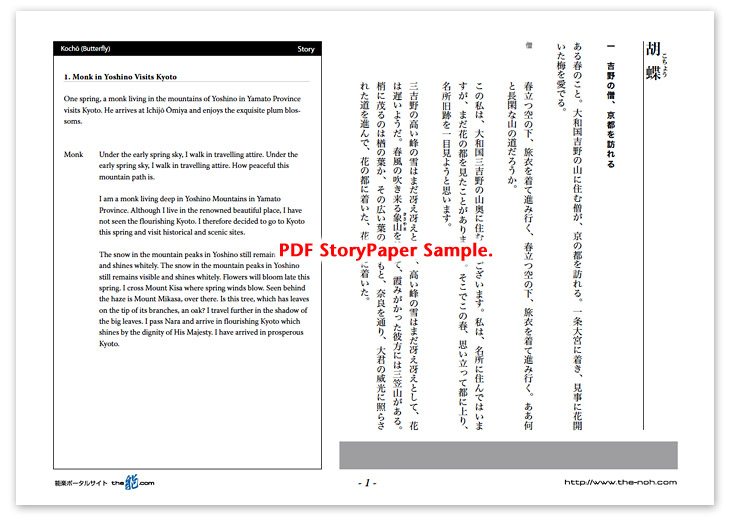
 Kochō (Butterfly)
Kochō (Butterfly)

![]()
A monk living in a deep mountain in Yoshino in Yamato Province (present-day Nara Prefecture) visits Kyoto in early spring. Arriving at the Ichijō Ōmiya area, he finds an exquisite plum tree blooming on the grounds of an imperial villa. While viewing the blossoms, a woman talks to the monk. As the monk inquires about her name and the history of the building, she tells its history but conceals her name. When he inquires once again, the woman reveals that she is a butterfly who laments that she cannot have the chance to enjoy plum blossoms. She then tells the monk she wants him to recite a holy sutra for her so she can become a Buddha. After announcing that she will appear in his dream at night, she disappears in the evening sky.
At night the monk lodges under the plum tree, recites a sutra, and sleeps. Appearing in his dream is the spirit of the butterfly. After expressing her delight at seeing the plum blossoms in her dance, she flies away to the dawning sky.
![]()
Although this piece includes the episodes relating to “the Butterfly Dream” of Zhuangzi in China and the chapter of Butterflies in the Tale of Genji, the story itself is quite simple. The theme is a poetic fantasy; a butterfly who has been lamenting that she cannot see plum blossoms encounters a wonderful plum blossom at a beauty spot in Kyoto and dances with joy. Therefore, it seems that the descriptions regarding the bond with Buddhism are included in this piece simply as the result of following the conventional practice of Noh stories.
Unlike the other pieces in the Third category, which are likely to cherish a soft, mellow, and relaxing atmosphere, this piece is light and airy, assumedly because this is a story about a butterfly. This drama will allow you to enjoy the exhilarating spirit of welcoming spring at the beginning of the season.
STORY PAPER : Kochō (Butterfly)
Story Paper presents noh chant stories in modern speech, with story outlines, highlights and more using Adobe PDF format, which can print out and zoom in. Print out the pages and take them with you when you see the actual noh performance.

The copyright of Story Paper is held by the Noh.com. Story Paper is for individual use only. It is prohibited by the copyright law to distribute or publish printed-out Story Paper pages without prior consent. For more information, check the credit and disclaimer pages.



 [Kochō (Butterfly) : Story Paper PDF : 556KB
[Kochō (Butterfly) : Story Paper PDF : 556KB